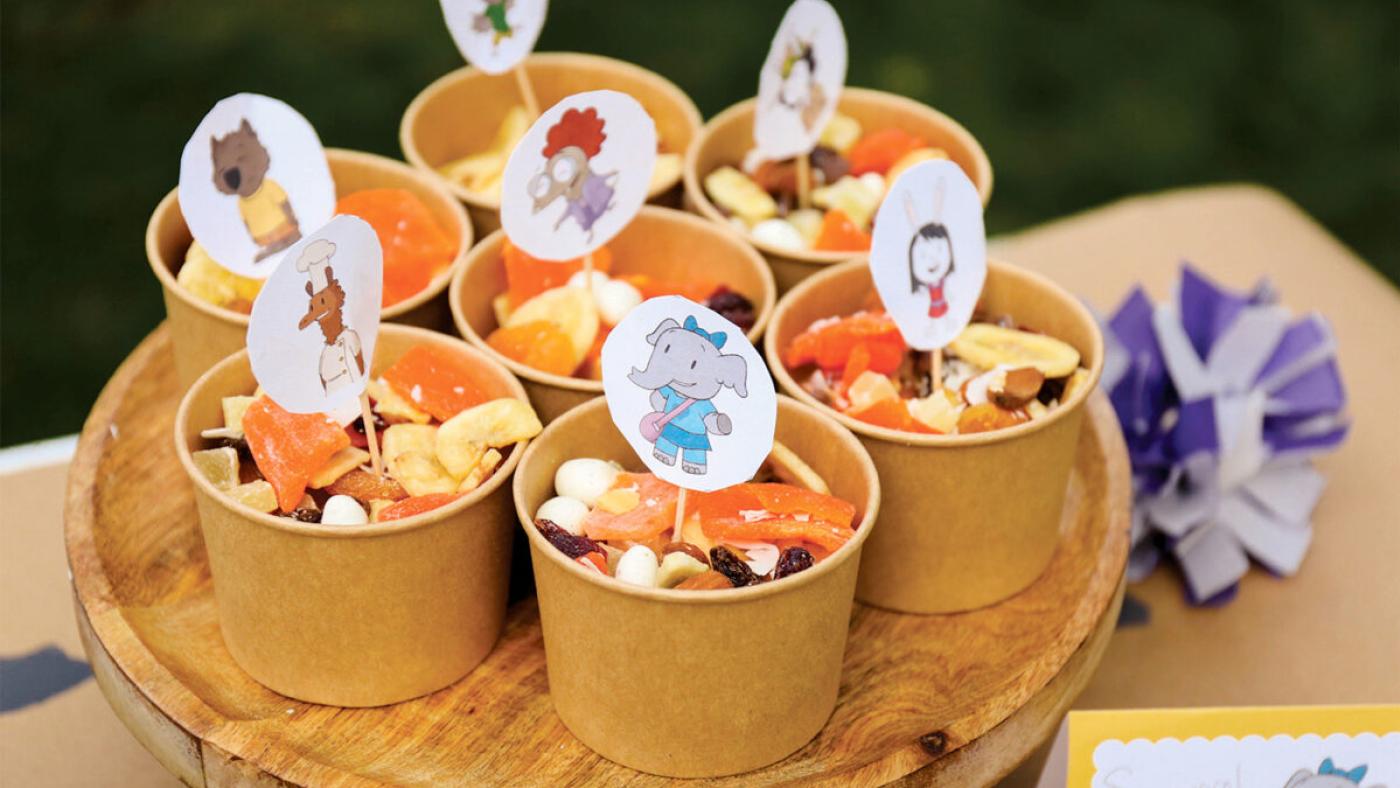The Journey of a Loaf of Bread from a Farm to Your Table
Daniel Hautzinger
November 2, 2023
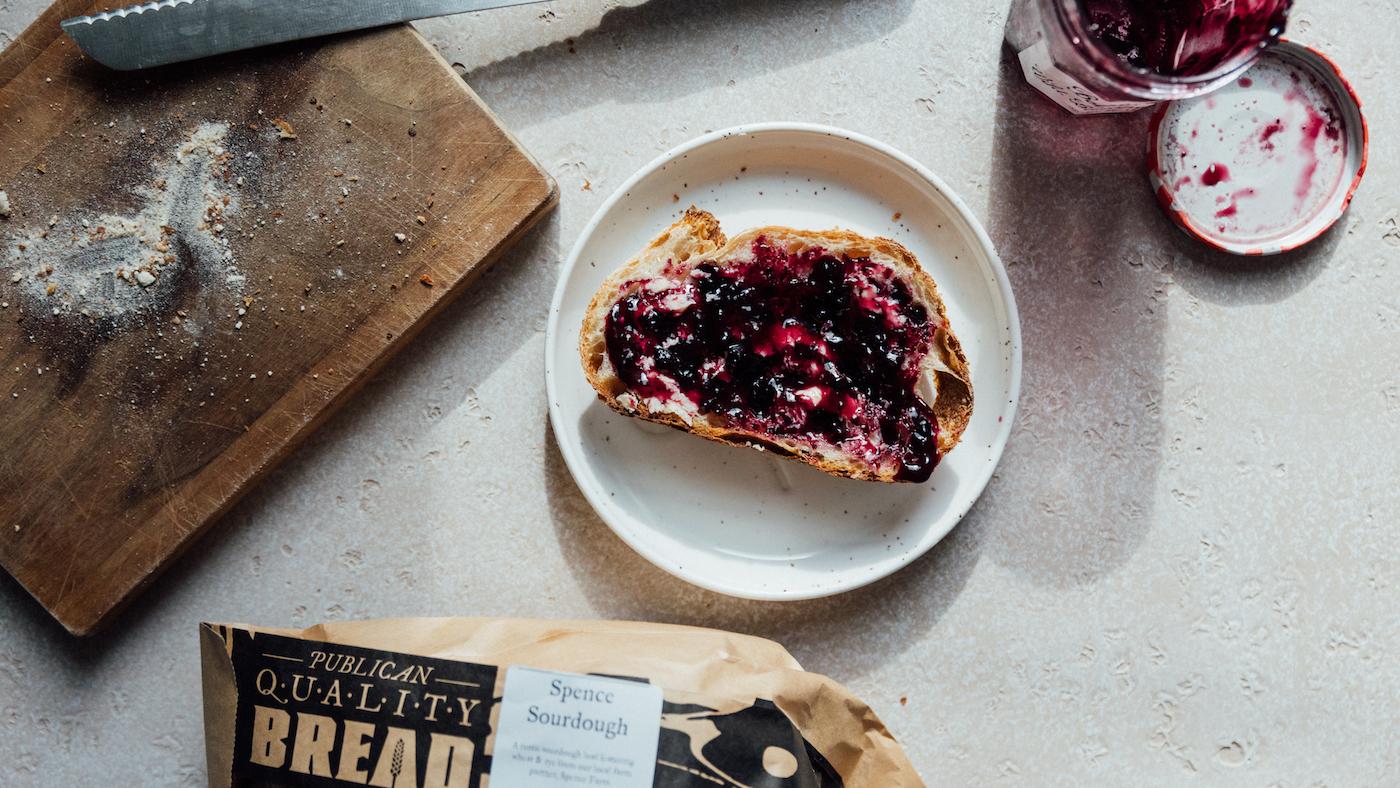
Get more recipes, food news, and stories by signing up for our Deep Dish newsletter.
Bread is an elemental thing. “The connection of soil and sun to wheat, and flour and water to bread, and living yeast to ashes is one of the oldest, most natural cycles,” the Publican Quality Bread baker Greg Wade writes in Bread Head, the 2022 cookbook he co-authored with Rachel Holtzman. “The significance of our connection with the farmers who grow our grains should be no different than the significance of our connection with the people who sit around our tables and consume our bread.”
In the present day, that connection between farmer, miller, and the bread that anchors a table is obscured by industrial agriculture, globalization, the demands of profit, and the gulf between rural areas and urban ones.
But it still exists, cultivated with devotion by bakers like Wade, farmers like Harold and Ross Wilken, and millers like Jill Brockman-Cummings. They’re all striving to nurture and strengthen it by passing on knowledge and building a regenerative, sustainable agricultural food chain.
The Wilkens run and co-own Janie’s Farm in Danforth, Illinois, and Janie’s Mill in Ashkum, where Brockman-Cummings oversees operations. They grow corn, soybeans, and wheat on their farmland, milling the wheat into flour that is then made into bread by bakers like Wade.
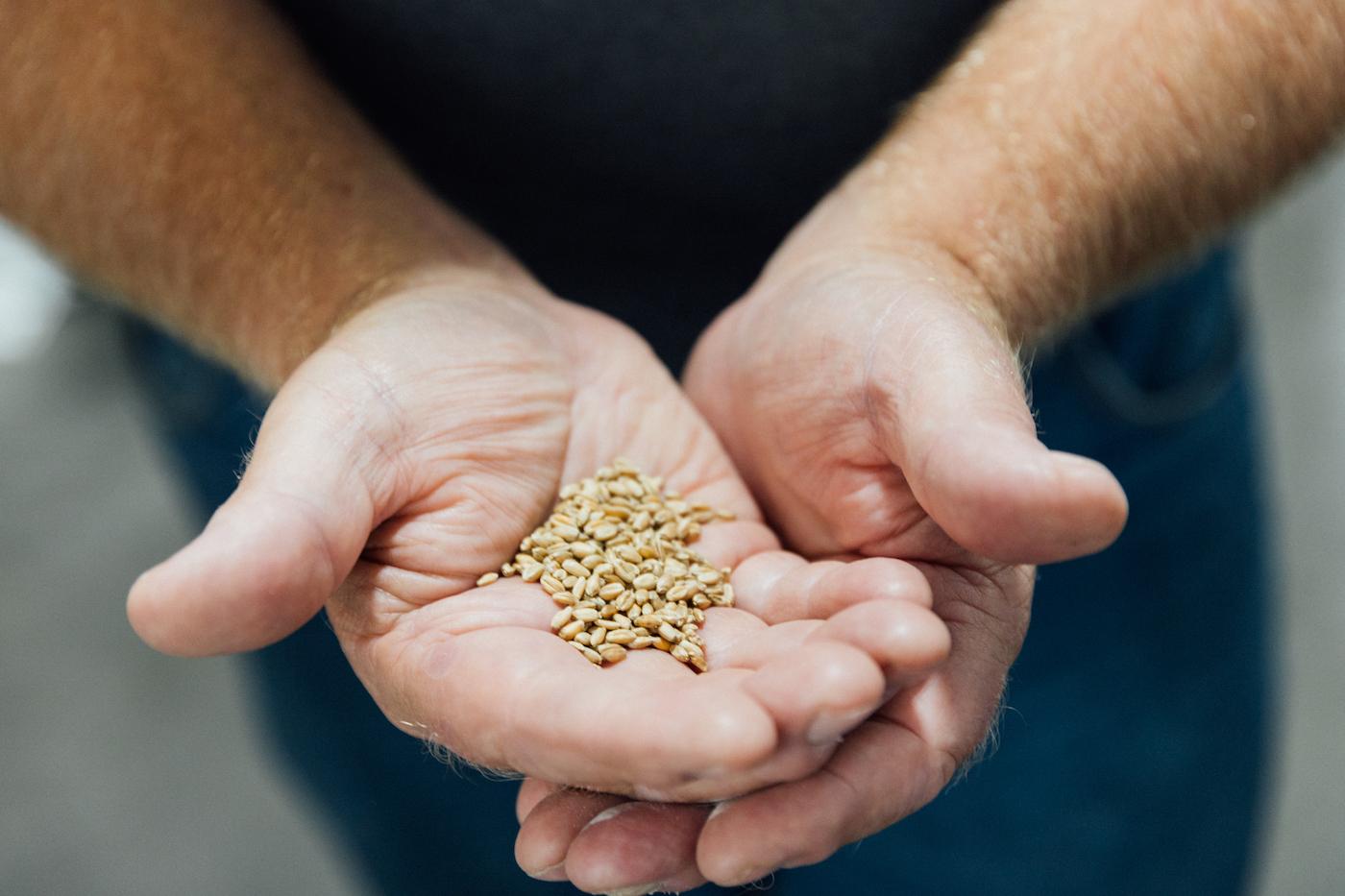 Wheat like this Glenn hard red spring wheat grown on Janie's Farm is ground into flour down the road at Janie's Mill. Credit: Sandy Noto for WTTW
Wheat like this Glenn hard red spring wheat grown on Janie's Farm is ground into flour down the road at Janie's Mill. Credit: Sandy Noto for WTTW
The process starts with the planting of some varietals of wheat in the fall. The germinating seed sends forth probing roots, then a protected shoot that produces leaves, then subsidiary shoots. A head emerges and is pollinated, allowing individual kernels to grow and build starch and protein. In July, the wheat is harvested and stored in towering grain bins on Harold’s homestead.
Those flavorful, nutritious kernels eventually go up the road to Janie’s Mill to be ground into flour, which is then driven to Chicago and a bakery like Publican Quality Bread to become a loaf of bread. At PQB, the flour is combined with water and sourdough starter before being mixed, divided, risen, shaped, and fermented. Then it is baked, cooled, and sent off to be sold at specialty stores, served in sandwiches or bread courses at restaurants, or enjoyed with a slathering of butter and jam at home.
That’s the carefully tended path a loaf of bread takes from a farm to your table. But there’s so much more to it.
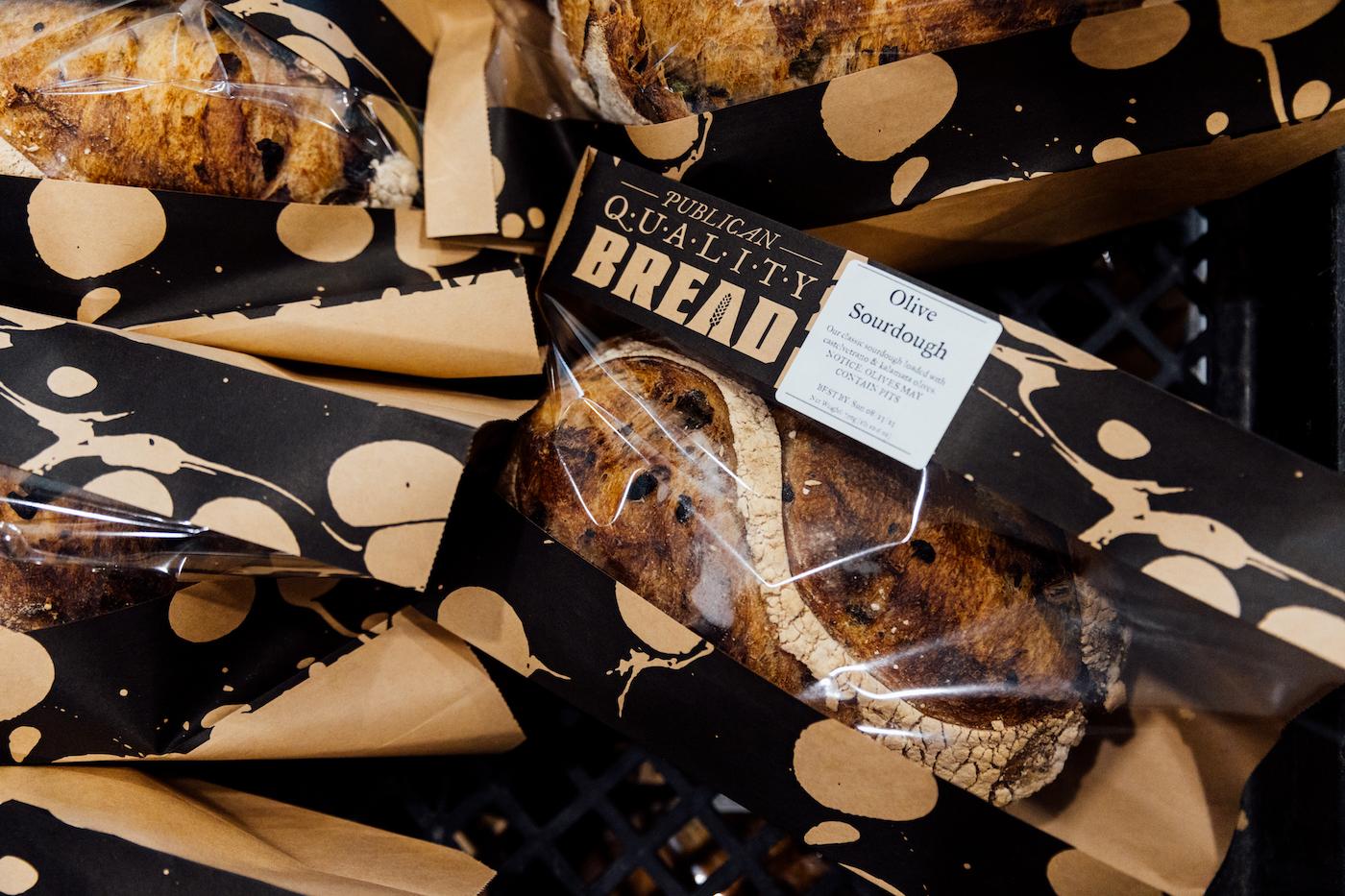 Loaves from Publican Quality Bread go to restaurants and retailers across Chicago. Credit: Sandy Noto for WTTW
Loaves from Publican Quality Bread go to restaurants and retailers across Chicago. Credit: Sandy Noto for WTTW
From the Farm...
Ross Wilken is the fifth generation of his family to farm in northeast Illinois. In 1882, his second great-grandfather became the last brother to immigrate to Illinois from Germany. Around 40 of the 3,200 acres that Ross now farms with corn, soybeans, and wheat are still the original land that great-great-grandfather farmed. The rest of the family has mostly moved away, but Ross and his cousin Tim Vaske continue to work on the land Ross’s father Harold named Janie’s Farm.
Harold’s father was a dairy farmer at first, but switched to corn and soybeans after his wife died in a tractor accident when Harold was two. He farmed conventionally, with synthetic fertilizer and pesticides; Harold helped hook up the first chemical sprayer as a young child because his hands—now large, weathered, and welcoming—were small enough to reach and tighten the bolts. Armed with his knowledge of bolts, he proceeded to frequently dismantle his swing set, to his father’s eternal frustration.
Corn and soybeans are the number one and two crops in the United States, and Illinois is the top producer of soybeans in the country. The two crops are so common on commercial farms in the Midwest that they are viewed as almost one entity, often spoken as one word: corn-and-soybeans. “Corn and soybeans is what everyone in Illinois does,” Ross says. “No one grows wheat.”
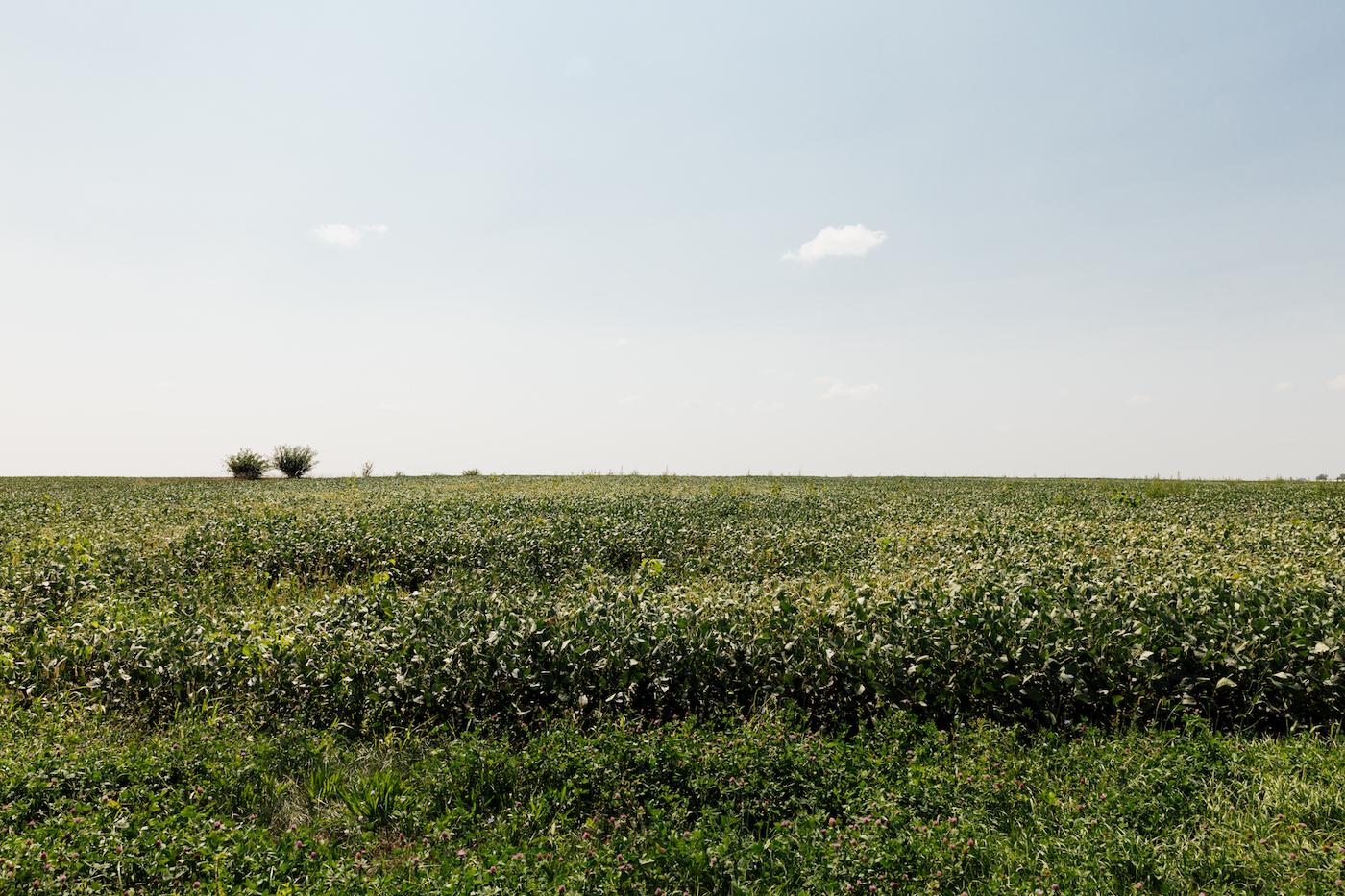 Illinois is the United States' top producer of soybeans, which are the number two crop in the country after corn. Credit: Sandy Noto for WTTW
Illinois is the United States' top producer of soybeans, which are the number two crop in the country after corn. Credit: Sandy Noto for WTTW
Harold followed the conventional farming path plowed by his father’s tractor. He grew corn and soybeans, and occasionally added wheat to the mix.
But near the end of his 23 years of conventional farming, he started to hate it.
“I didn’t like what was happening with the soil: it was getting harder, it wasn’t draining well. I knew we weren’t doing the right things,” he says. That’s in addition to the headaches and health problems he believed were caused by some of the herbicides he used.
Ross was around twelve years old when he told Harold that he wanted to farm with him some day. “Well, that wasn’t going to happen on a conventional farm at our size. We were 700 acres at the time,” Harold says. There wasn’t enough yield to support both of them.
After Harold’s daughter Janie—now the namesake of his businesses—was killed in a car accident as a teenager, his neighbor Herman Brockman sent a condolence letter in which he asked Harold to organically farm the land Herman had bought from his parents.
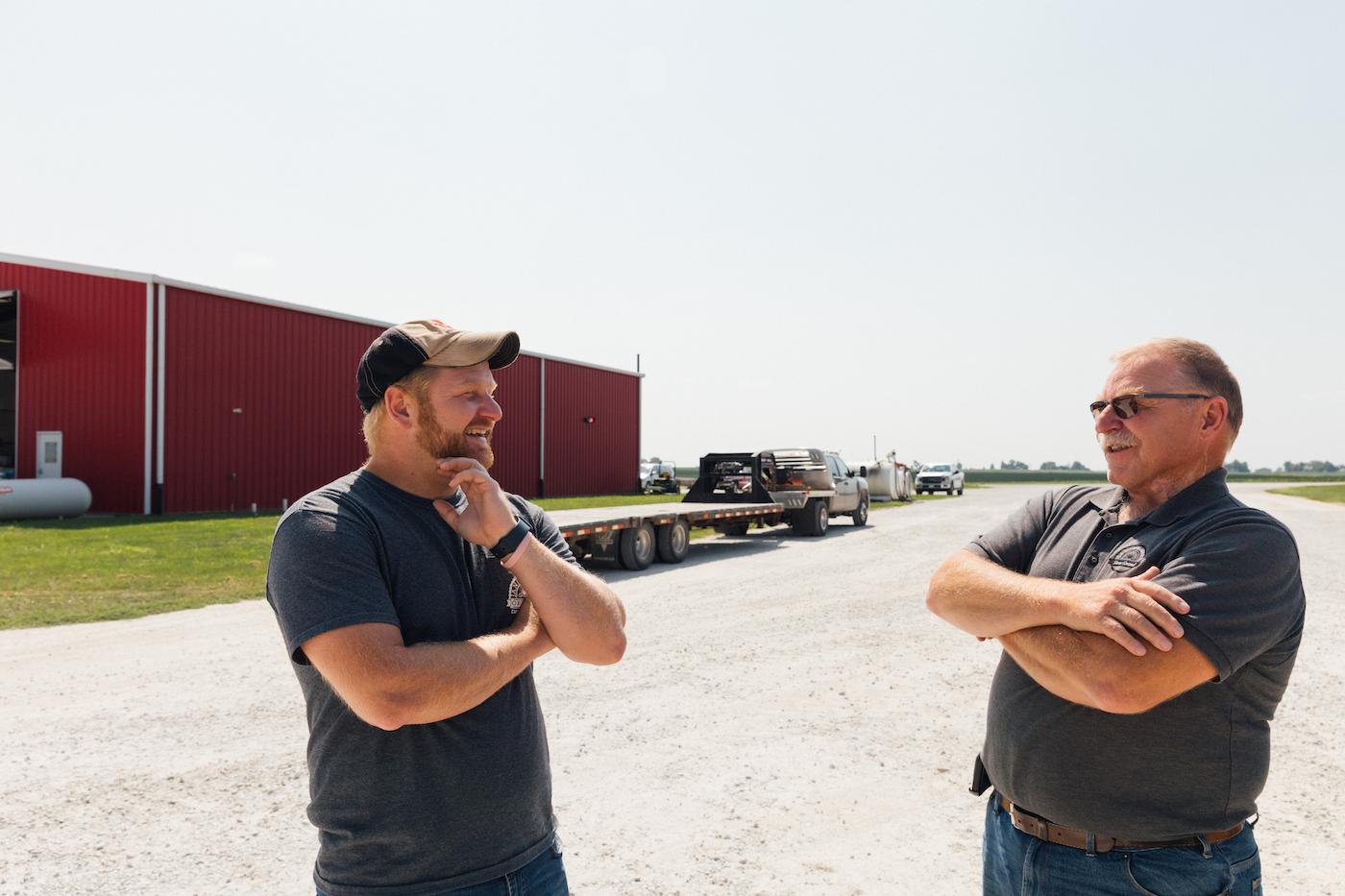 Ross Wilken was around twelve years old when he told his father Harold he wanted to farm with him. Credit: Sandy Noto for WTTW
Ross Wilken was around twelve years old when he told his father Harold he wanted to farm with him. Credit: Sandy Noto for WTTW
“He was always very interested in organic farming, because he remembers when his father farmed organically, because everybody farmed organically [back then],” says Jill Brockman-Cummings, Herman’s daughter and now the manager of Janie’s Mill. “The farmer who was farming their land was all chemical farming, and my grandmother was against it all those years, but they didn’t have anyone else to farm it.”
The offer was a lightbulb moment for Harold. “Janie had passed away, and it was like, ‘Why am I worried about what other people think?’” He had always fretted about catching grief from his neighbors if he farmed organically, because more weeds crop up without the use of aggressive chemical herbicides. “Finally, I got to [think], ‘You know what, life is short. I need to do what I need to do.’”
Around six months before his father died, Harold told him that he was switching to organic farming. “He said, ‘Do you remember all the weeds I had?’” Harold recalls. But Harold knew the soil was in bad shape, and wanted to change how he was doing things. He transitioned Brockman’s land to organic, then did the same with the other land he was farming, with the owners’ permissions, eventually acquiring more acres.
A plot of land has to be farmed for three years without synthetic fertilizer or pesticides for it to be certified organic by the United States Department of Agriculture. But it takes five years for the land to fully recover after it has been denuded by conventional farming chemicals, according to Harold.
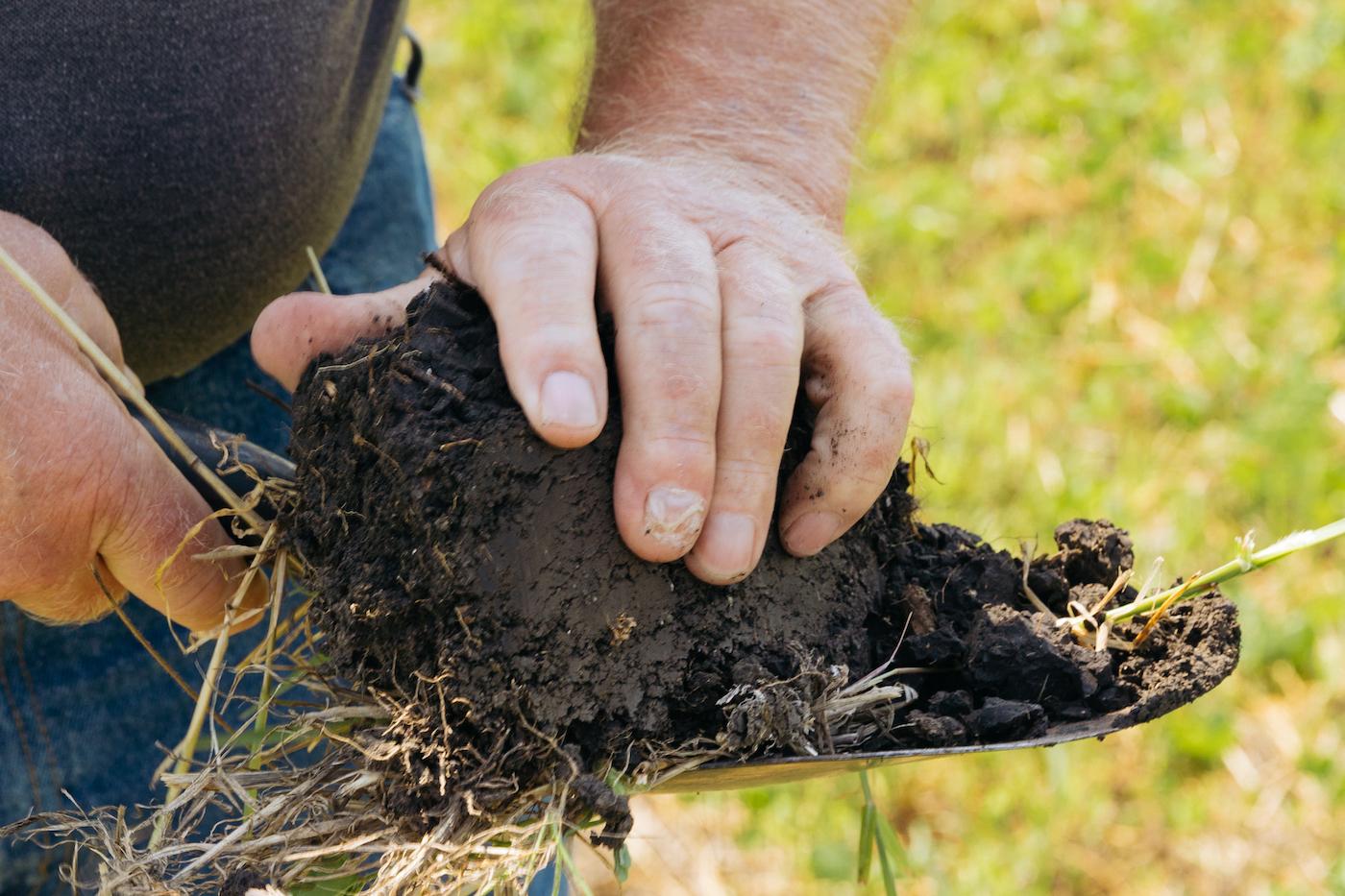 Harold Wilken says that organically farmed soil is both more nutrient-rich and holds water better. Credit: Sandy Noto for WTTW
Harold Wilken says that organically farmed soil is both more nutrient-rich and holds water better. Credit: Sandy Noto for WTTW
Three decades into organic farming, he rhapsodizes about the quality of his dark soil. Not only is it more nutrient-rich, he says; it also holds water better. The soil and plants on conventional farms are “spoonfed” everything they need in the form of synthetic fertilizers, leaving them dependent on chemicals, he says. Despite widespread drought this year—farmers in Kansas brought in their smallest wheat crop in more than 50 years—Harold says his farm is set to do exceptionally well. While out in the fields, he was amazed to see how many pods his soybeans were carrying, and eager to share the finding with Ross and the other workers.
Harold’s brother still farms conventionally, and won’t ever go organic, according to Harold—but that doesn’t prevent Harold from trying to educate other farmers about organic farming and helping them transition to it. He and Ross were named organic farmers of the year in 2023 by the Midwest organic education organization Marbleseed.
Ross started working and running the farm after studying agricultural systems management at the University of Illinois, where he was something of a resource on organic farming, since conventional farming is still the norm by far. Professors would sometimes ask him, “What do you guys do?” when questions about organic farming came up. Now he manages the day-to-day operations of the farm and handles finances for both the farm and mill, while Harold oversees things and drives around the Midwest delivering flour.
“You go and you deliver to somebody and they give you a fresh loaf of bread and they [say], ‘Oh, I don’t know what we would do without your flour,’” Harold says. “It’s like, I know where I’m supposed to be.”
 Janie's Farm wheat is stored in grain bins on Harold's homestead until it is ready to be milled. Credit: Sandy Noto for WTTW
Janie's Farm wheat is stored in grain bins on Harold's homestead until it is ready to be milled. Credit: Sandy Noto for WTTW
To the Mill...
Jill Brockman-Cummings has been manager of Janie’s Mill for six years now, since Janie’s millstones first started rotating and grinding grain into flour in 2017. She had no experience in milling. “I knew what good flour was because I had lived in Europe, and [had] started baking my own bread because I thought American bread was horrible,” she recalls.
She was a stay-at-home mom when Harold asked her to run the mill he was setting up. He had had another lightbulb moment while packing up some wheat he had grown to ship to a feed company in Lackawanna, New York. Why am I shipping my wheat almost 600 miles to feed chickens? he thought. We’ve got all these people right here who eat.
While a “bread renaissance,” focused on high-quality bread made with a variety of grains had begun on the coasts, the movement was only just starting to pick up in the country’s breadbasket itself. But people in the Midwest were also looking to move beyond America’s “horrible” bread, to bread that’s “a little rough around the edges, a little louder than is polite, and stupid good,” as Greg Wade writes in Bread Head.
 Greg Wade of Publican Quality Bread is one of several bakers in Chicago who has focused on local, unusual grains and sourdough bread. Credit: Sandy Noto for WTTW
Greg Wade of Publican Quality Bread is one of several bakers in Chicago who has focused on local, unusual grains and sourdough bread. Credit: Sandy Noto for WTTW
Better bread requires better flour. Wade had begun buying local, organic grains from Marty Travis of Spence Farms (a couple counties over from Janie’s) while working at the Girl and the Goat in Chicago around 2010. He took over the bakery at Publican Quality Bread in 2014 and began producing a variety of pastries and loaves for restaurants, stores, and consumers, continually experimenting and improving. “I’m pretty much always thinking about how to make bread, and how to make it better,” he writes in Bread Head. He was first nominated for Outstanding Baker at the James Beard Awards, America’s most significant food industry awards, in 2017, the year Janie’s Mill opened. He won in 2019.
By then, Janie’s was also milling Spence Farms grains in addition to those grown by the Wilkens. Marty Travis has his own small-scale milling equipment, but there wasn’t a larger mill in the region that would take unusual grains. (Some bakers even use small mills to make their own flour at their bakery, to ensure it is the freshest possible.) “Most flour in the grocery store is roller-milled,” Brockman-Cummings explains.
Roller-milling involves removing the nutritious germ and layers of bran from a whole grain, leaving only the “white, starchy endosperm,” she says. Flour produced that way “makes nice, lofty loaves, but there’s no other nutrients. And that’s why on grocery store flour you see ‘enriched,’ because they have to add back in nutrients.” Wade points out in Bread Head that commercial flour is also bleached, partly for aesthetics, partly to make it less volatile.
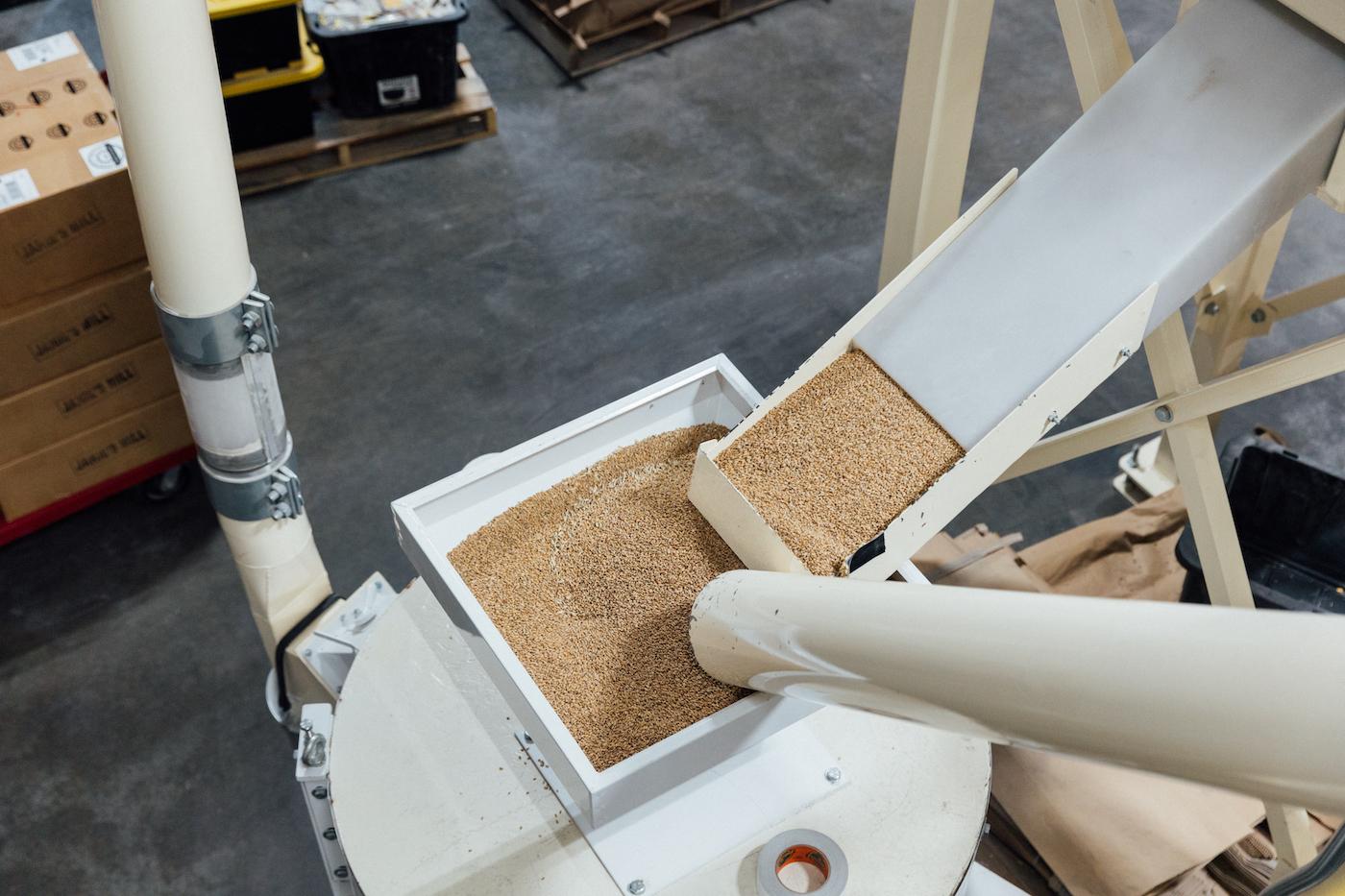 Stone milling keeps most of the kernel, and all its nutrients, in the flour. Credit: Sandy Noto for WTTW
Stone milling keeps most of the kernel, and all its nutrients, in the flour. Credit: Sandy Noto for WTTW
Janie’s Mill has two stone mills, which use grindstones of basalt, granite, and flint set in concrete to crush the whole grain—germ, bran, and endosperm. Healthy oil from the germ permeates the flour, as do fiber, nutrients, and flavor from the bran. The presence of the fat from the germ means the flour is less shelf-stable than refined grains, but you can keep it in the freezer to make it last longer.
“That’s what grain is supposed to be, for our bodies to digest it, to get all the nutrients. And it’s much, much, much healthier, and flavorful,” Brockman-Cummings says. “The goodness of the grain is in the flour.”
The demand for different kinds of flours and varying levels of protein within them has influenced what the Wilkens grow on their farms. (They also source grains for the mill from other farmers.) “Jill likes to throw at me [hard red] spring wheat, which is super high-protein,” Ross says with a rueful grin. “But you plant it in the spring, which is the same time all the weeds are trying to germinate.”
“We were told we couldn’t raise hard red spring here,” Harold says. “It all had to be raised in the northern tier of states. Well, we’ve been raising it since 2016.”
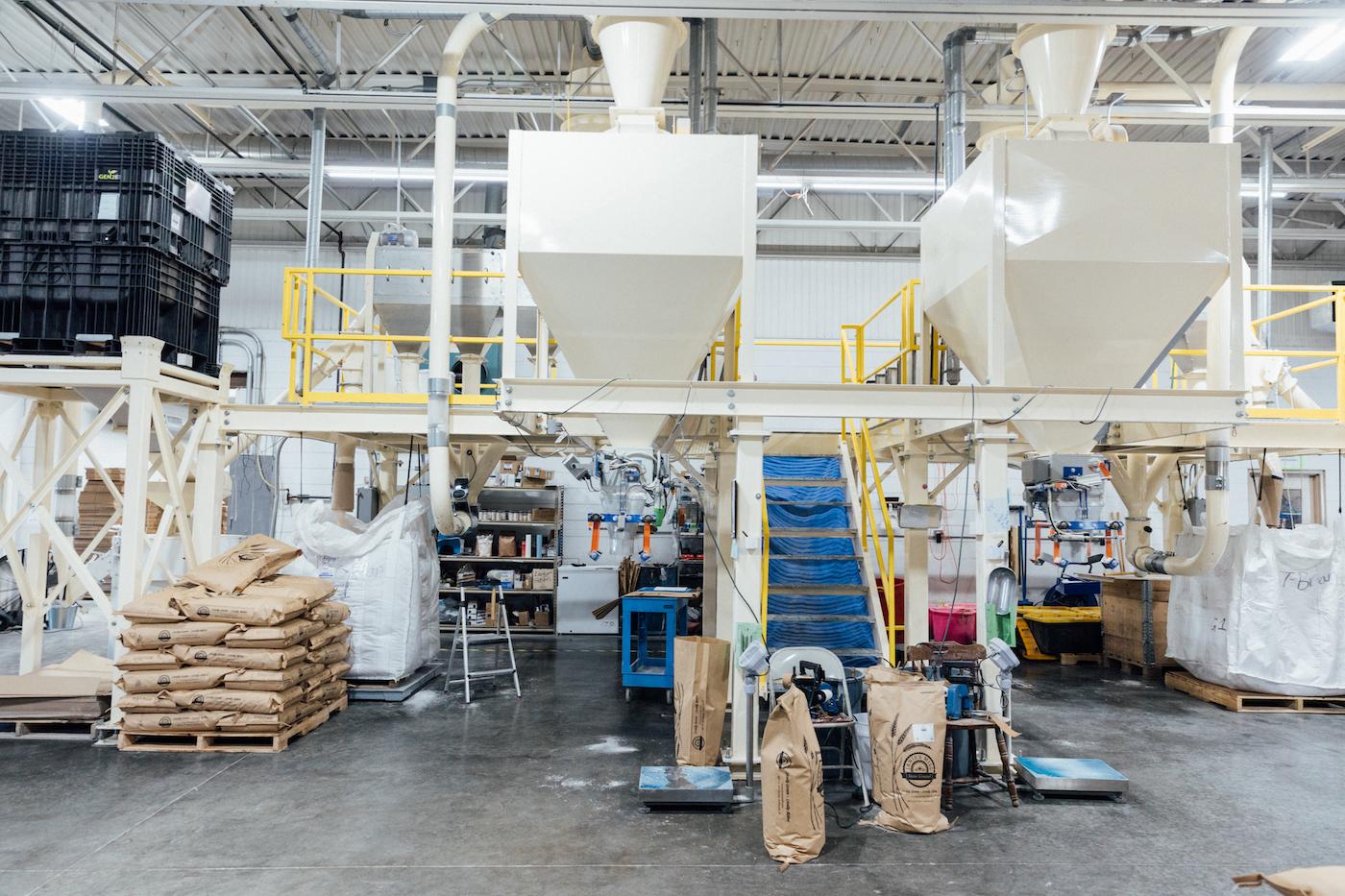 The two mills at Janie's Mill are running more often than not. Credit: Sandy Noto for WTTW
The two mills at Janie's Mill are running more often than not. Credit: Sandy Noto for WTTW
Huge bags and boxes of grains like hard red spring wheat stand waiting to be processed in the warehouse of Janie’s Mill. Gravity feeds them into a hopper that then pours them into the mill, where they are crushed between the rotating grindstones. The result is sucked up through a pipe, and some of the heavier bran is sprayed off via vacuum. In the case of lower-protein flours, which are used for products such as pastry or cake, the flour then moves through a series of sifters, which spin it through progressively finer filters. Any piece that is too large to fit through the sifters is sent back through the mill until it is small enough. Despite the sifting, 70 to 90% of the whole kernel remains in their sifted flours, according to the company. Whole kernel flours don’t go through the sifter; what’s in the grain is in the flour.
Nothing is wasted. The byproducts—the bran that is shot off, the “dust” aspirated off of barley as it’s toasted and crushed in a “roaster flaker”—become fertilizer for Wilken’s fields, animal feed, or go to mushroom growers. “Purged flour” that comes out when the mill is cleaned between grinding different types of grain travels to a nearby food pantry or home to employees’ freezers.
“We’re all spoiled—no one can go back to normal flour,” Brockman-Cummings says. There are nineteen full-time employees at the mill, a particular point of pride for Wilken. The building that the mill occupies in Ashkum, a town of some 800 people, used to be an oil company. Wilken recalls coming in with his father to buy filters for his tractor. When it closed, fifteen jobs in the small community disappeared. Between Janie’s Mill and Farm, Wilken is employing almost double that number.
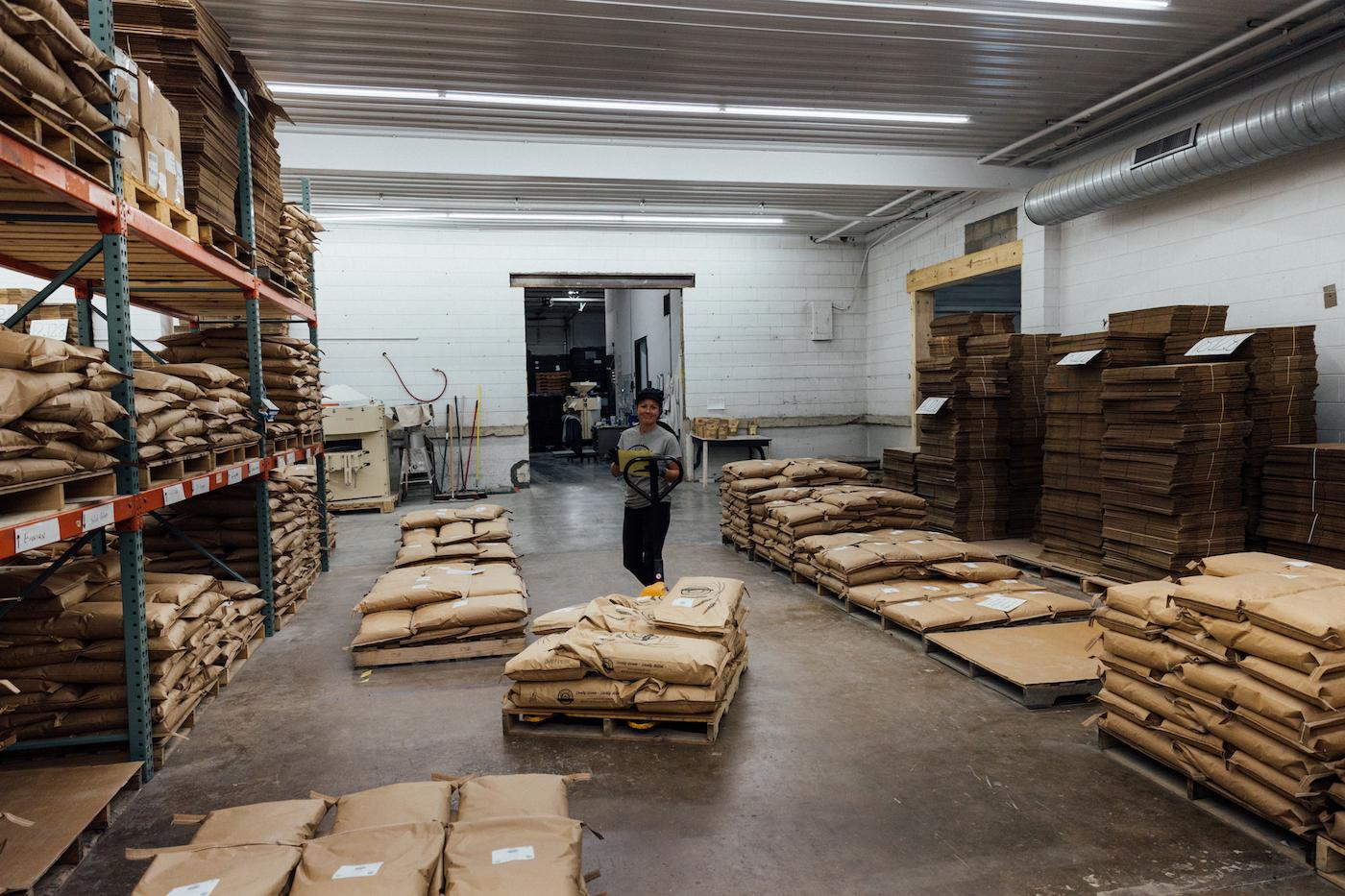 Several employees, like head miller Bre Mathy, came to Janie's after losing their jobs during COVID. Credit: Sandy Noto for WTTW
Several employees, like head miller Bre Mathy, came to Janie's after losing their jobs during COVID. Credit: Sandy Noto for WTTW
Several of the workers came to the mill after losing their jobs during COVID, at a time when the mill’s business was growing exponentially due to a boom in home baking. Wilken likes to think of his late daughter Janie as his human resources manager, because he can’t imagine how so many exceptional workers showed up at his door without some otherworldly providence at play.
The employees seem proud to work at the mill. Brockman-Cummings and Wilken introduce each of them by name, and ask them to explain their vital role in the operation. Bre Mathy is a former bartender who now heads up the day-to-day milling as head miller. Heidi Snapp and Toni Potts come in at 4:30 am to pack online orders, leaving them free in the afternoon to experiment with baking. Tracy Heideman and Dawn Schoolman have dubbed themselves the “all-purpose girls,” because they take on extra tasks when they’re not too busy filling bags with grains and flour. Heideman lives so close she drives her golf cart to work.
The mills at Janie’s are running more often than not. While they generally get shut off around 5:00 pm everyday, a night miller comes in from 8:00 pm four days a week. Whereas Wilken and Brockman-Cummings once thought milling 500 pounds in a day was good, they’re now up to around 7,000 pounds. On one day during the pandemic, they had 568 orders to fulfill. Wilken’s wife, a schoolteacher, had to call in friends and students to help pack orders.
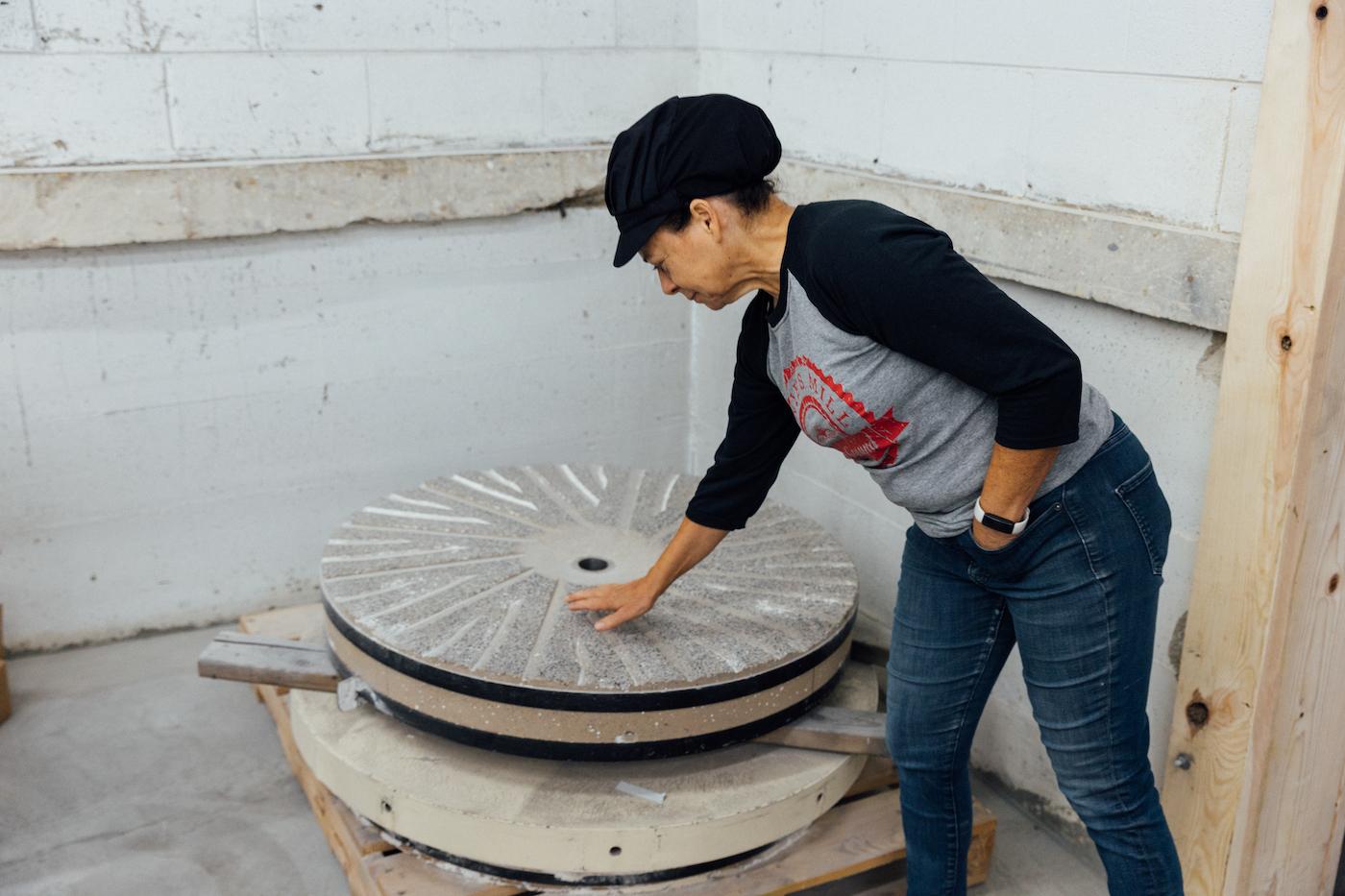 "There's no 'This is how you stone-mill,'" says Jill Brockman-Cummings, who learned with the help of feedback from bakers. Credit: Sandy Noto for WTTW
"There's no 'This is how you stone-mill,'" says Jill Brockman-Cummings, who learned with the help of feedback from bakers. Credit: Sandy Noto for WTTW
Despite the scale of the mill’s production, many things are still done by hand. The heavy bags of flour that come straight from the grindstones are finished off by hand to insure they are exactly 50 pounds, and then sewn shut with a simple handheld device that rests on a charmingly homey wooden dining chair. Less uniform products such as buckwheat, cracked wheat, grits, and wheat berries are bagged entirely by hand.
Much of the product is hand-delivered by Wilken himself, who’s on the road to Chicago, Ann Arbor, Kansas City, St. Louis, and other places in the Midwest three to four days a week. Feedback from customers drives what the mill does—and was especially helpful at the beginning, when Brockman-Cummings was still learning the trade. “There’s no manual, there’s no videos, there’s no ‘This is how you stone-mill,’” she says.
The first test baker to whom Brockman-Cummings sent flour told her, “Jill, this isn't flour. It’s sand,” Wilken recalls with a chuckle. “I’ve come a long way since then!” Brockman-Cummings says.
She solicited advice from the few other millers in this country with a similar operation, but also learned by trial and error with the help of bakers like Ellen King of Hewn Bakery in Evanston, Janie’s biggest wholesale client by volume. King picked up flour weekly and then tested it out at her bakery and noted attributes in a spreadsheet, letting Brockman-Cummings know if any adjustments needed to be made.
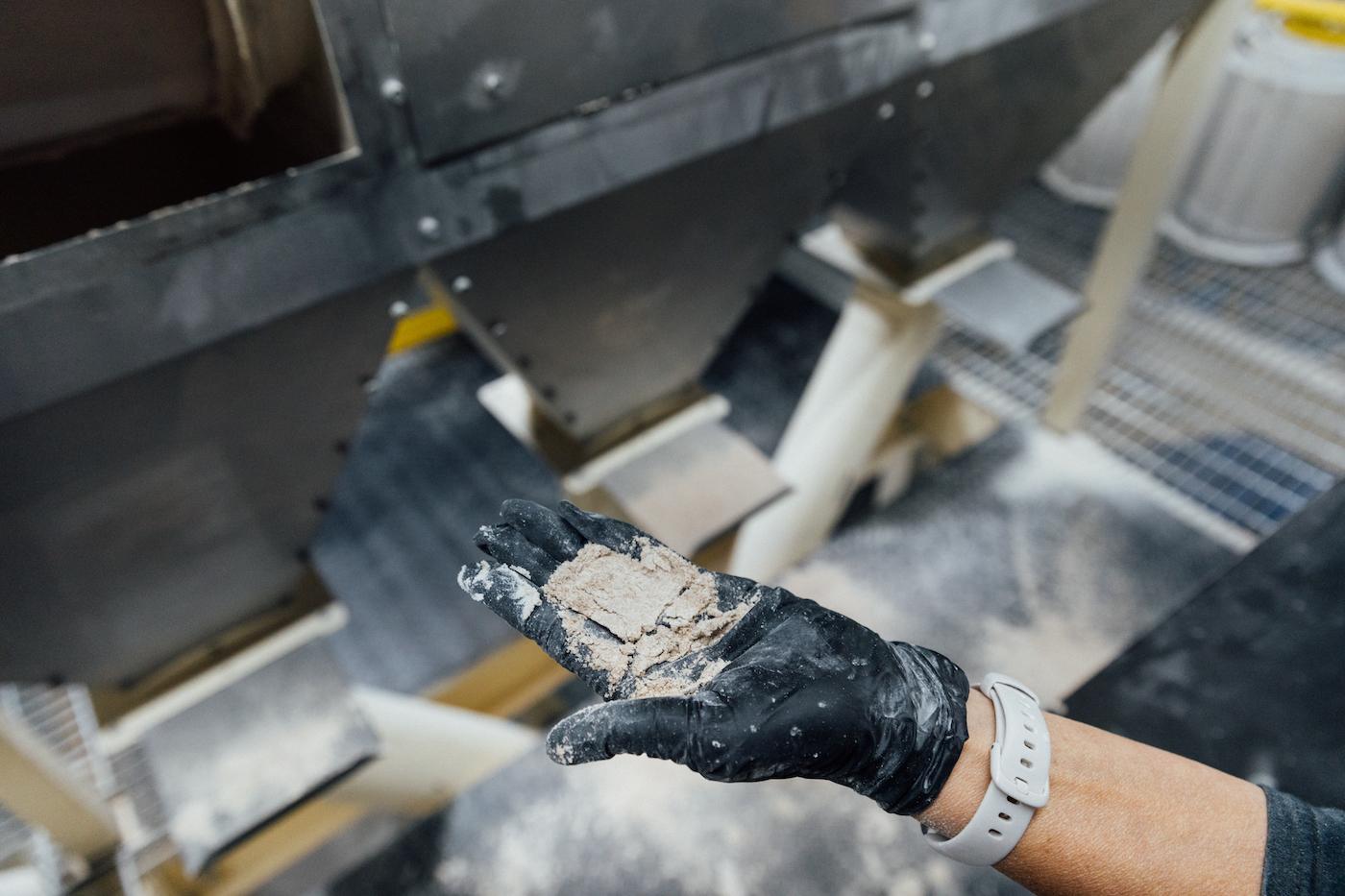 Even in Janie's Mill's sifted flours, 70 to 90% of the whole kernel remains, according to the company. Credit: Sandy Noto for WTTW
Even in Janie's Mill's sifted flours, 70 to 90% of the whole kernel remains, according to the company. Credit: Sandy Noto for WTTW
“She helped me learn how to mill,” Brockman-Cummings says. “She’d say, ‘This would be better if you could take off some of the bran,’ or ‘This would be a good whole kernel flour,’ ‘This would make a good pastry flour.’ So that’s how we did it.”
There’s still plenty of conversation between the mill and their bakery clients. Samples of all of the flour are tested at a lab at the University of Illinois Extension, which makes sure there are no fungi or toxins present and also notes the protein content, moisture, and gluten strength of a batch—vital information for high-level bakers. Some, like Greg Wade, get even more data in the form of a farinograph, a sort of “blueprint for the flour.”
Knowing all those statistics allows the bakers to adjust their recipe depending on variations in the flour that result from weather or different growing conditions, thus ensuring relatively standard loaves of bread. While a one to two percent difference in moisture content might not affect a home baker too much, when a commercial baker is making hundreds of loaves, they have to add or subtract a substantial amount of water to make up the difference.
“I correspond with Greg on the spec sheets quite often,” Brockman-Cummings says. “He’s at a whole other level.”
“He’s a sourdough geek,” Wilken adds.
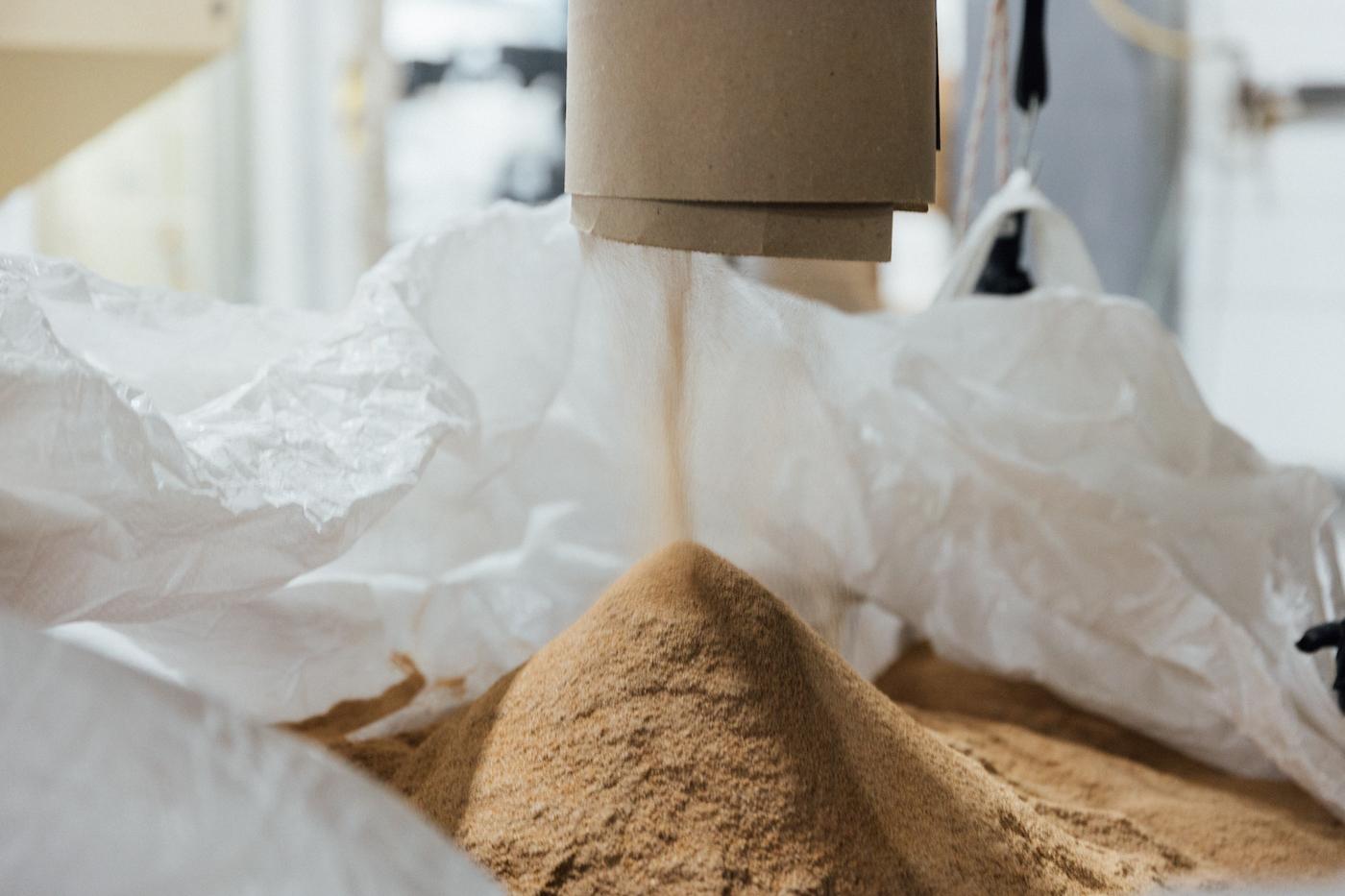 "The goodness of the grain is in the flour," says Brockman-Cummings of stone-milled, whole kernel flour. Credit: Sandy Noto for WTTW
"The goodness of the grain is in the flour," says Brockman-Cummings of stone-milled, whole kernel flour. Credit: Sandy Noto for WTTW
And Finally, to the Table
Greg Wade was first introduced to baking by his grandmother. He would bake cookies with her when she babysat him; later, he and his father would use her old bread machine and its accompanying cookbook to make bread on the weekends. But he didn’t start baking full-time until he was on the opening team at Girl & the Goat.
Like Brockman-Cummings, he didn’t have formal training in his chosen trade. “I learned to make bread by reading and practicing, practicing and reading,” he writes in Bread Head. When he first started baking for Publican Quality Bread, he was in the basement of Publican Quality Meats. Now he and his 41-person staff turn out seven to ten thousand loaves of bread a week plus pastries, pizza, and sandwiches from a 4,200 square-foot facility in West Town that also has its own retail counter. Another retail location will open soon in Oak Park.
Days at the bakery start in the quiet predawn around 5:00 am, when drivers like Andy Paarlberg load up a van to take deliveries of bread and pastries to about 100 restaurants and stores around the city. Those products have been baked, cooled, sliced, packaged, and labeled the afternoon before, but preparation of today’s baked goods begins around the time the drivers set off.
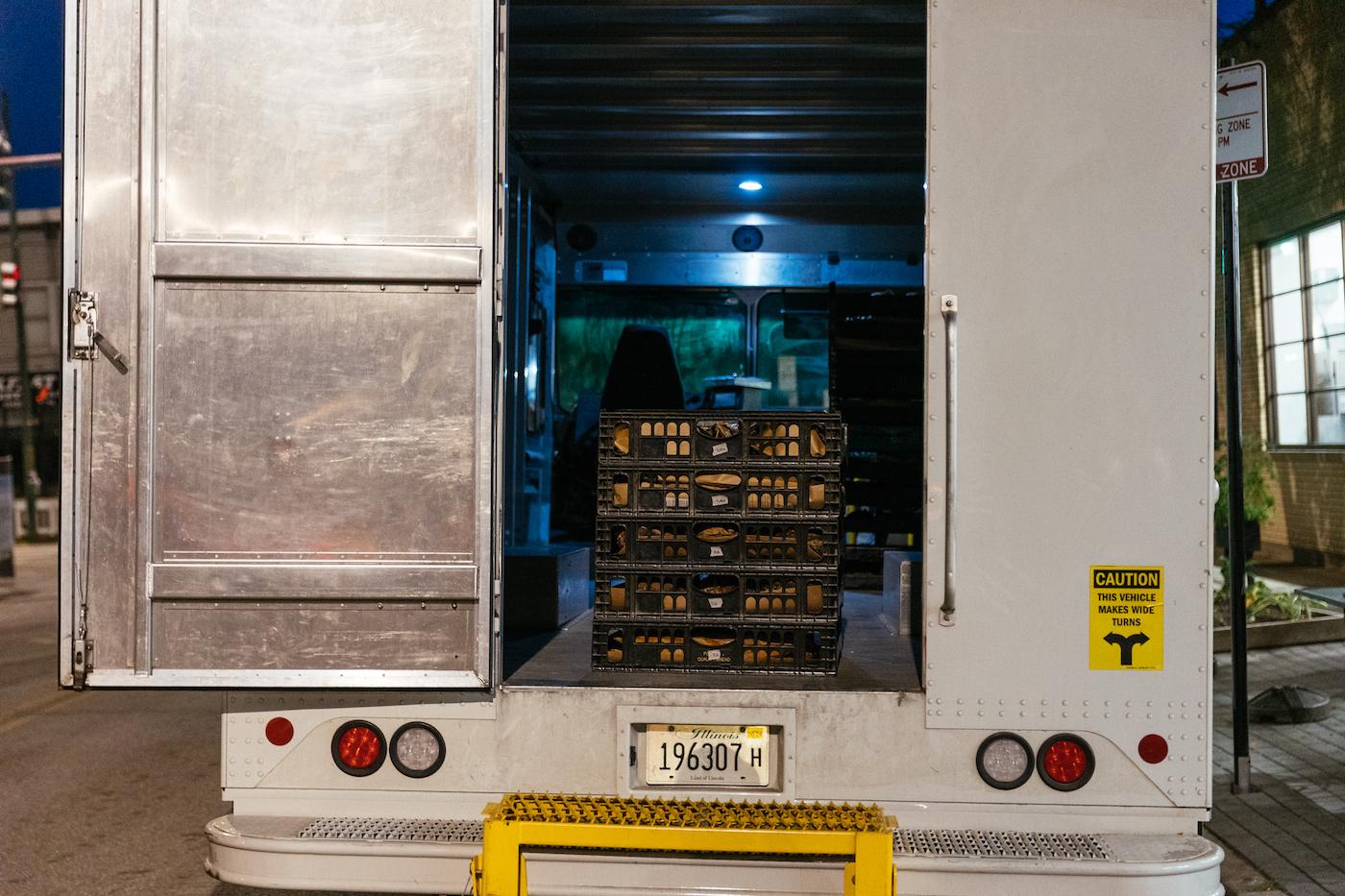 The day at Publican Quality Bread starts around 5:00 am, when wholesale deliveries are packed up. Credit: Sandy Noto for WTTW
The day at Publican Quality Bread starts around 5:00 am, when wholesale deliveries are packed up. Credit: Sandy Noto for WTTW
Everything starts with a levain, or sourdough starter. It is essentially a living colony of yeast and bacteria. When it is fed, the yeast breaks down complex carbohydrates in the flour into carbon dioxide, which causes the dough to rise, and ethanol, which feeds the bacteria. The bacteria then release lactic or acetic acid, providing sourdough’s distinctive tang. Just as microbes cultivate nourishing soil for the crops at Janie’s Farm, microbes in a starter create bread that is more complex in flavor and more easily digestible by humans.
Sourdough starters are all unique and provide specific flavors based on their individual microbes; PQB’s may have come from the legendary Nancy Silverton—who helped popularize sourdough in America—by way of one of her employees, who consulted at PQB when it first started.
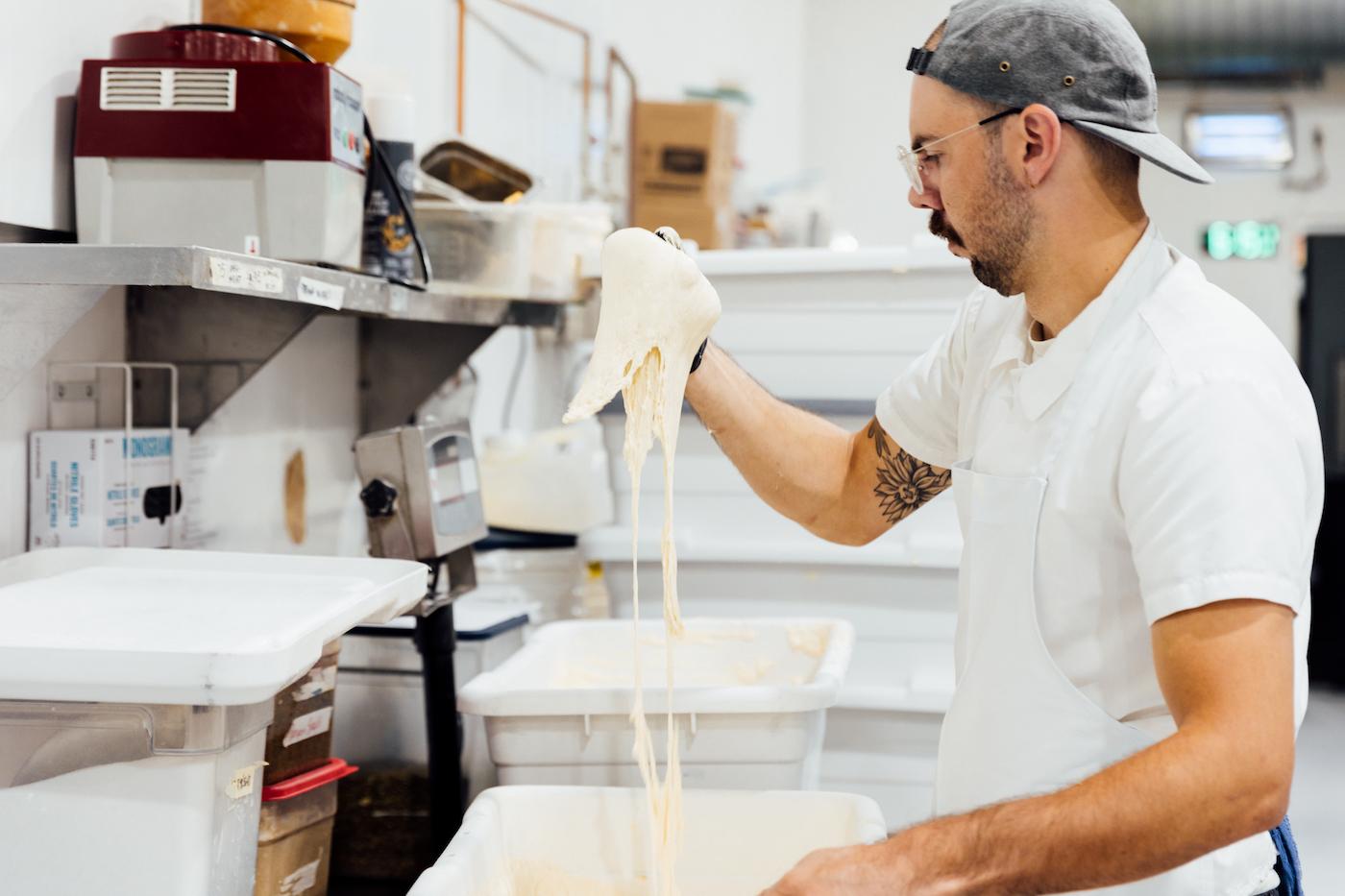 At Publican Quality Bread, mixers like Mickey Dennis tend to the sourdough starter and mix various doughs. Credit: Sandy Noto for WTTW
At Publican Quality Bread, mixers like Mickey Dennis tend to the sourdough starter and mix various doughs. Credit: Sandy Noto for WTTW
The starter is fed with flour and water three times throughout the day by mixers like Mickey Dennis. Some of it is kept aside for the next day of baking, and the rest is mixed with flour and water—and possibly honey, molasses or other additives—into bread dough, the quantity of ingredients varying slightly depending on the specifications of the flour as listed in the farinograph. Thirty to forty percent of the flour PQB uses is milled at Janie’s Mill, including grain from Spence Farm; the rest is bread flour from Central Milling in Utah.
The dough rests in one of the bakery’s mixers to develop structure before being mixed again. Once it has reached the correct hydration level and development—Dennis checks this in part by pulling and stretching a portion of tacky dough—it is mixed again. Dennis then dips his whole arm into the mixer to drape the dough over his forearm in order to pull it out and let it ferment in a cold space for several hours.
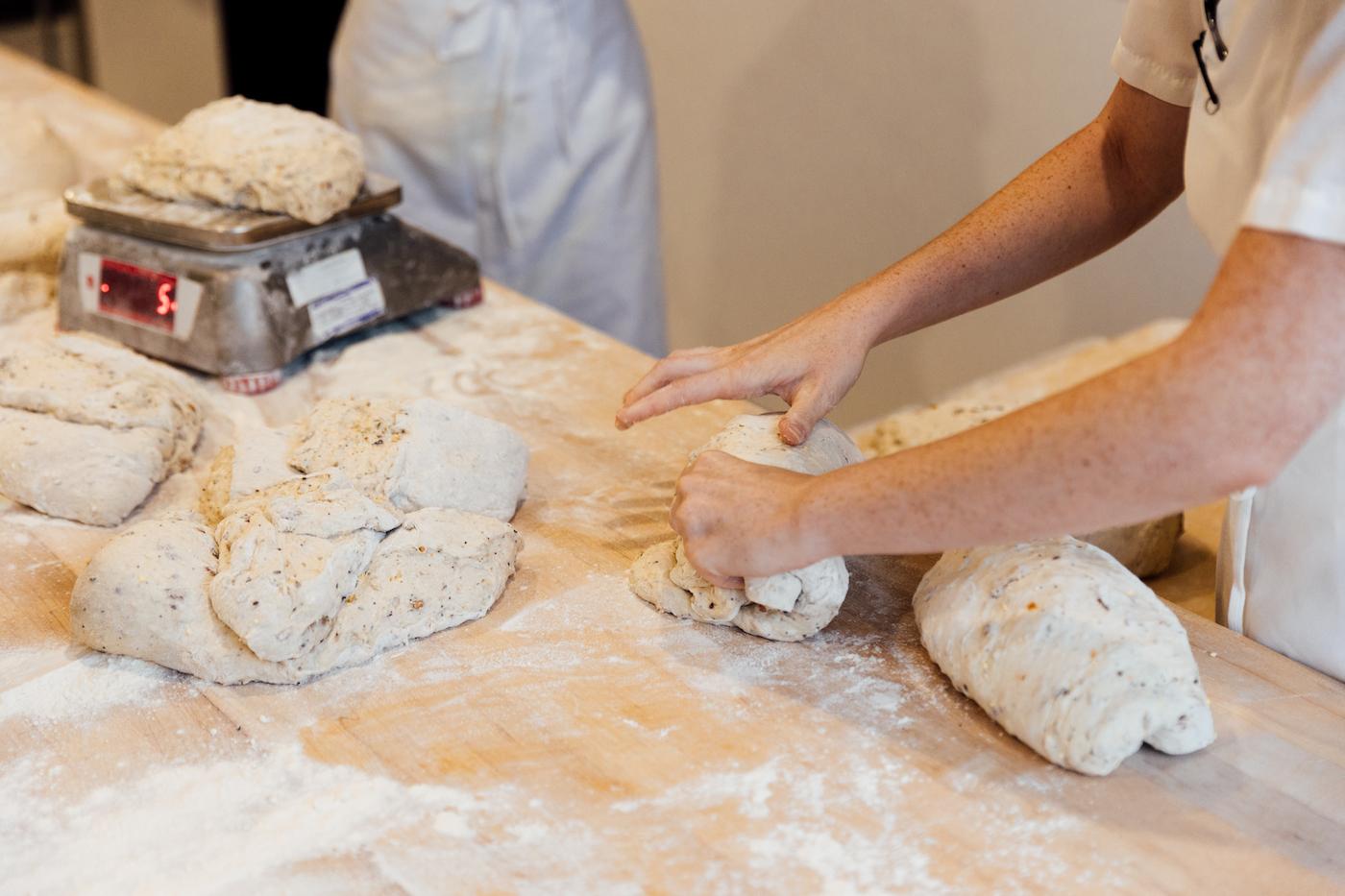 Bread dough is divided and shaped before being allowed to rest and ferment in a process that takes up to 60 hours. Credit: Sandy Noto for WTTW
Bread dough is divided and shaped before being allowed to rest and ferment in a process that takes up to 60 hours. Credit: Sandy Noto for WTTW
The dough is divided and pre-shaped into rough loaves by hand before resting again. It undergoes another round of shaping before rising in a wicker proofing basket lined with linen in the fridge overnight.
When the loaves are finally ready to bake, an employee such as Ted Dreier heads to the pre-heated five-rank industrial oven and lowers its conveyor belt to the bottom rank. He rolls a rack of loaves over and sets out dough-filled proofing baskets in a row on the conveyor belt. He then methodically upends them, lightly cupping each with his hands afterwards so that it retains its shape. He presses a button to move them down the conveyor belt and repeats the process.
Once the belt is full of some eight rows of expectant loaves, he scores many of them with a razor called a lame and then sends them into the oven. He does this for each rank of the oven, filling it completely.
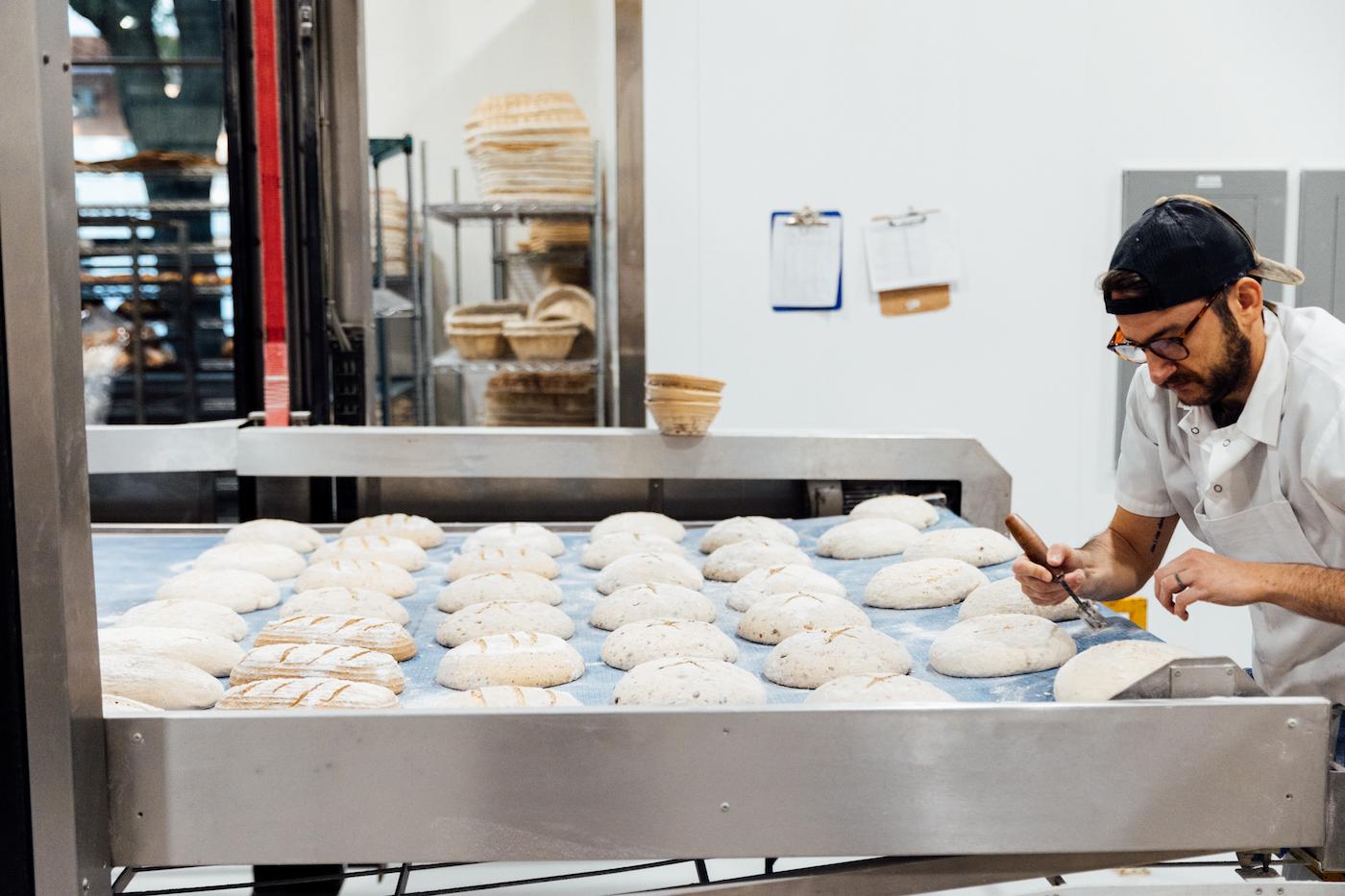 Ted Dreier scores bread loaves before sending them into the massive, five-rank oven. Credit: Sandy Noto for WTTW
Ted Dreier scores bread loaves before sending them into the massive, five-rank oven. Credit: Sandy Noto for WTTW
While the bakery fills with the irresistible scent of baking bread, Dreier brushes out the proofing baskets he has just emptied. Soon the brightly lit, barrel-vaulted space looks like a cross between a construction site and a lab, with flour dusting employees’ pants and shoes and rolling carts crowding every available space not taken up by some massive machine.
Dreier uses a flashlight to peek into the oven and check on the loaves. Because even such an advanced professional oven has its quirks, Dreier has to balance out the varying levels of heat in different areas of the oven. Some loaves emerge with fewer crisp dark spots than others.
The loaves cool on wire racks after coming out of the oven. The first loaves are for the retail shop at the bakery. Once those are finished, the bakers start to fulfill wholesale orders, which need to be packaged and often sliced before going out early the next morning. PQB produces seven to ten thousand loaves a week. The whole process takes up to 60 hours.
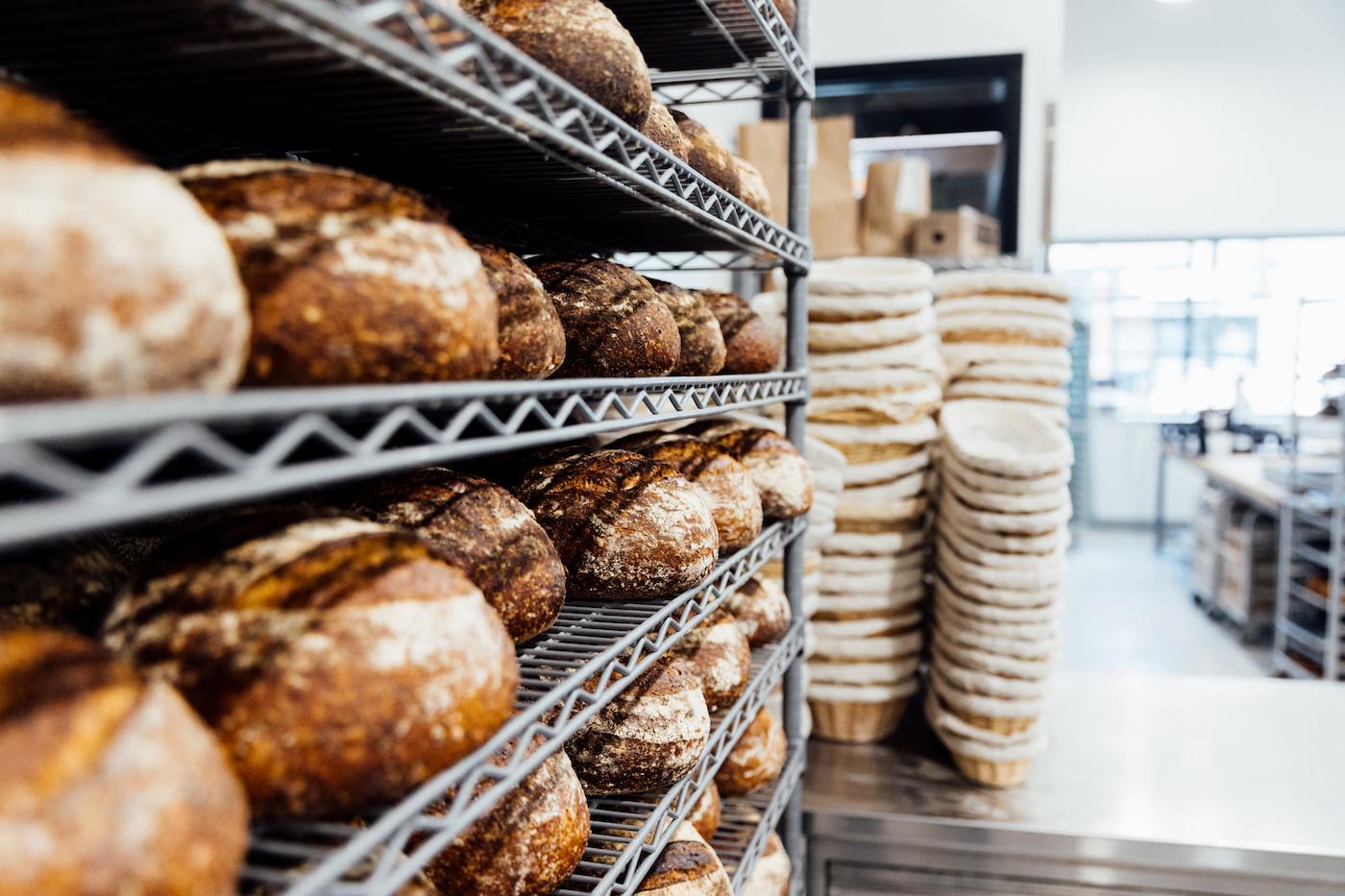 PQB produces seven to ten thousand loaves of bread a week. Credit: Sandy Noto for WTTW
PQB produces seven to ten thousand loaves of bread a week. Credit: Sandy Noto for WTTW
When Harold Wilken first started farming, he could only ever think about the next season, the next crop, the next harvest that would provide him and his family with enough to get by. Now that he has switched to organic farming and built businesses that employ not just his family members but also neighbors and friends, he has started looking farther ahead.
He’s finally making decisions with a mind toward those who will come long after him, seven generations beyond. He wants them to have rich fields to till, healthy grains to mill, and delicious loaves of bread to eat.
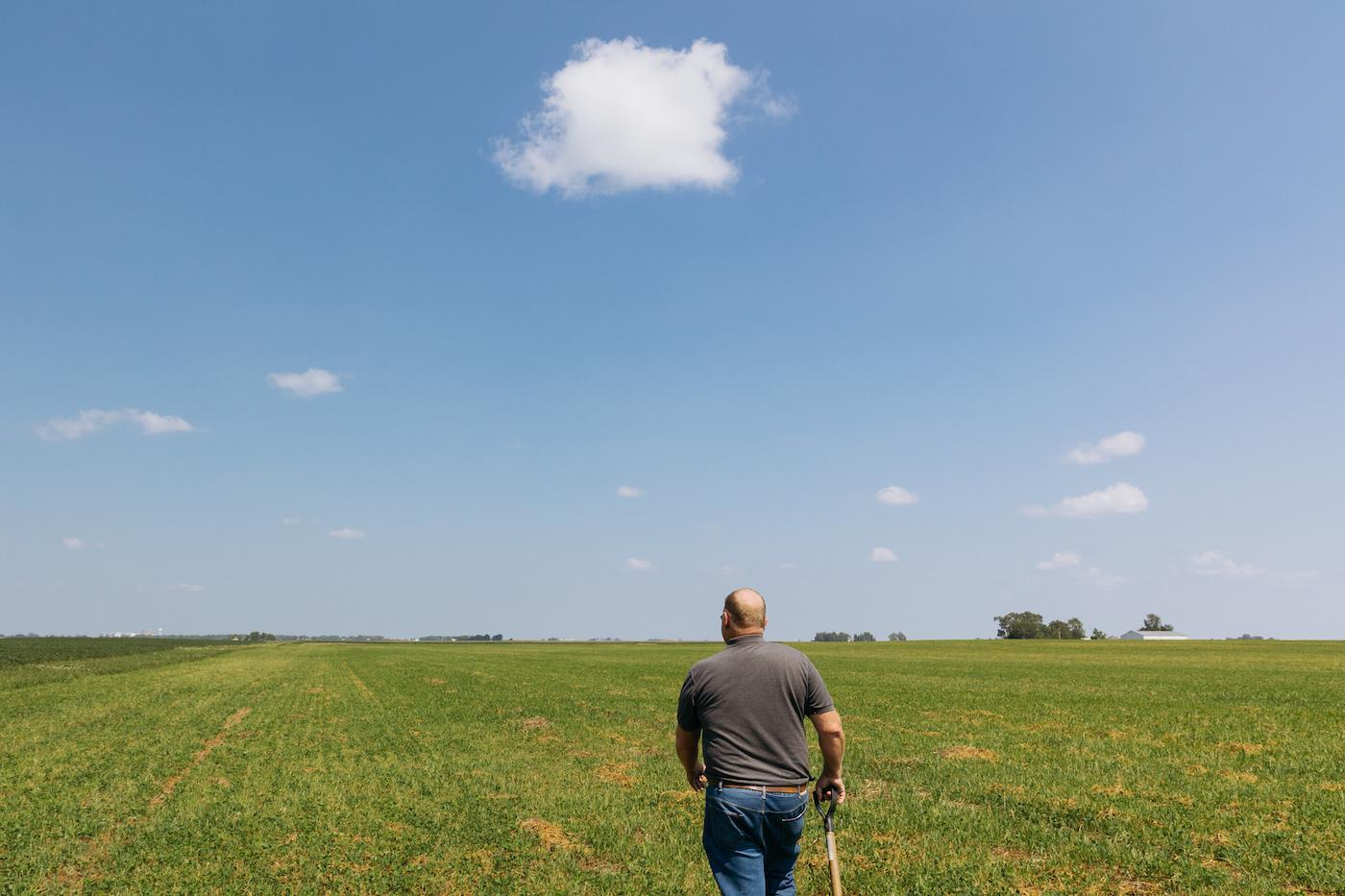 Credit: Sandy Noto for WTTW
Credit: Sandy Noto for WTTW


